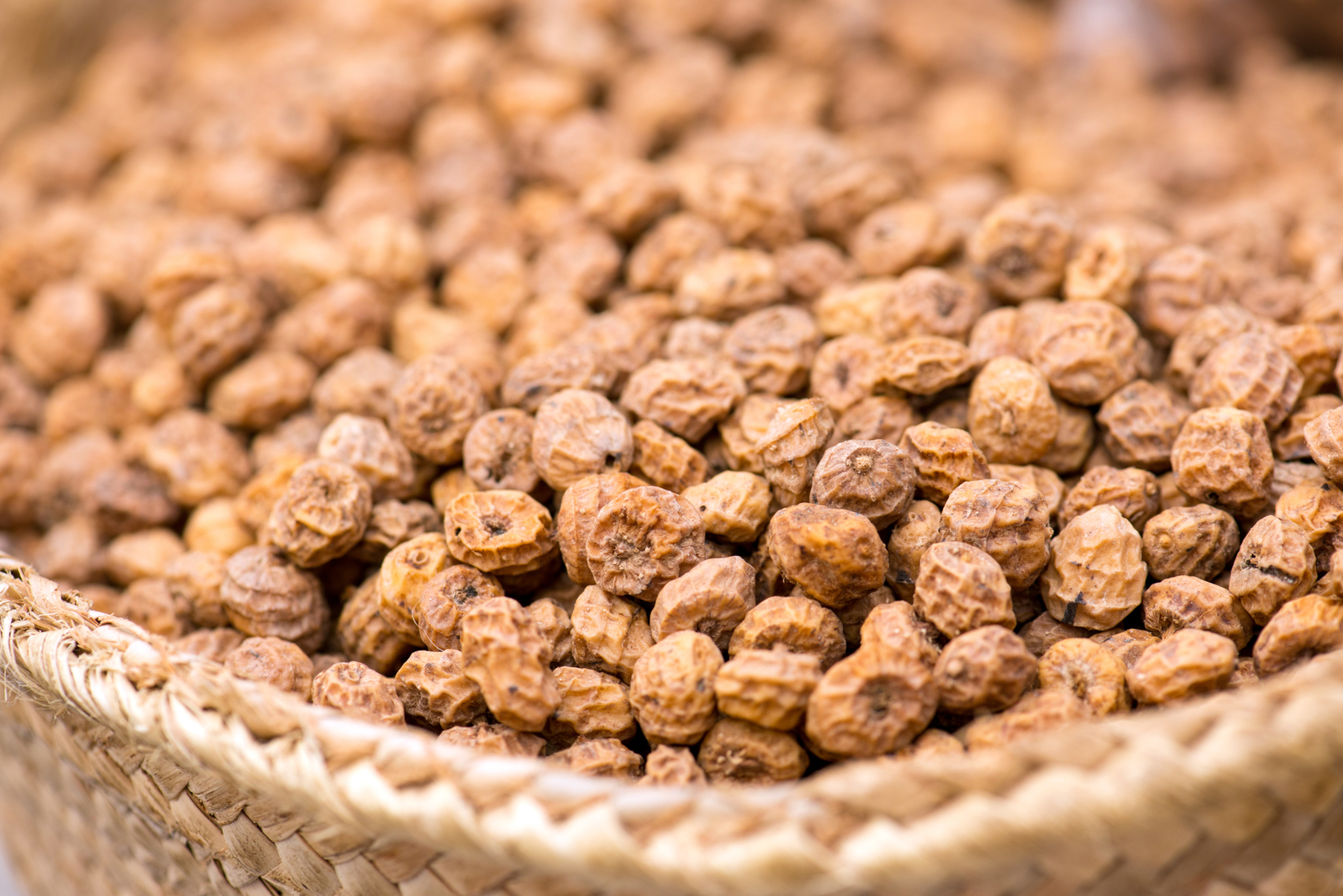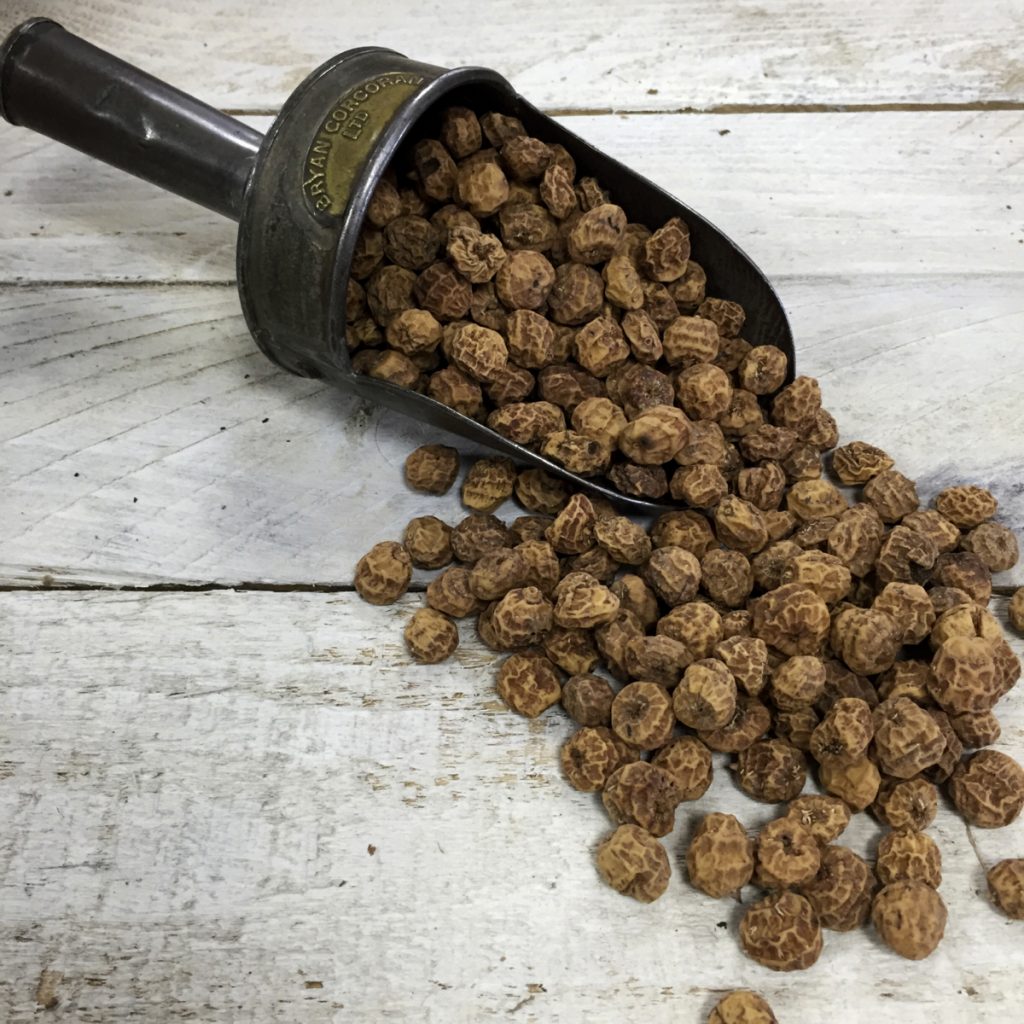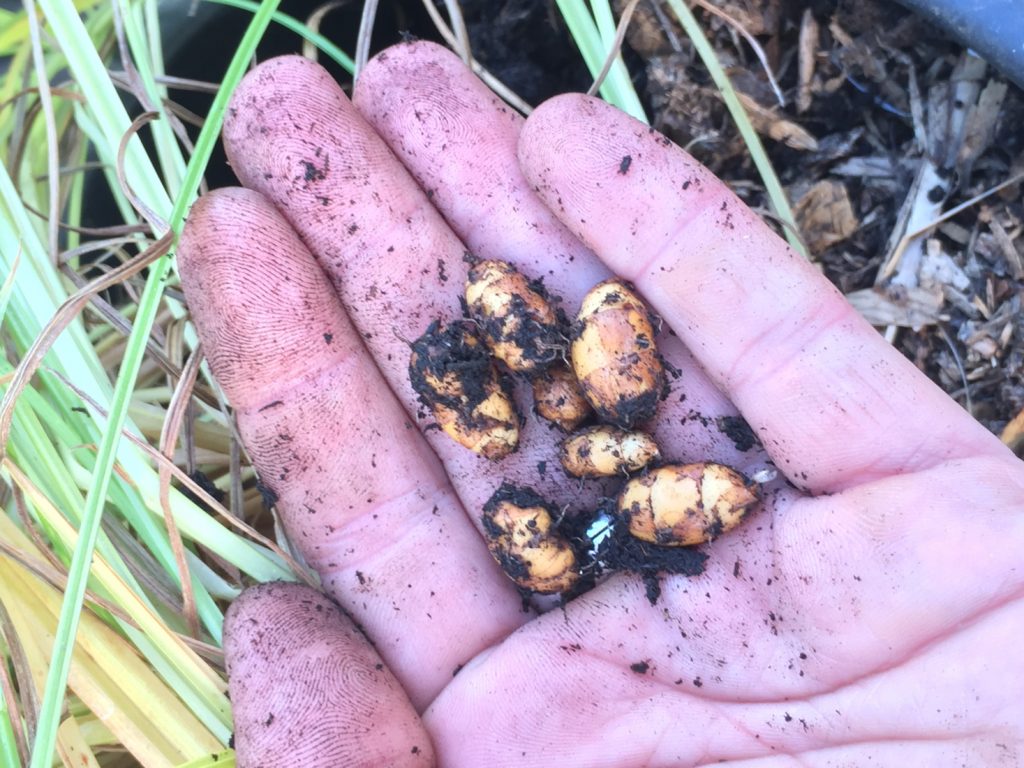Last Updated on January 11, 2023 by the Dobies Horticultural Team
When Is a Nut Not a Nut? When It’s a Tiger Nut!
Despite containing the word nut in its name, Tiger Nuts are not actually nuts but rather the tubers from a grass known as Yellow Nutsedge, or, to give it its proper name, Cyperus esculentus. Packed full of goodness and producing masses of intently sweet tubers that are bigger than peanuts with a taste of almonds and coconut, Tiger Nuts are a great alternative for anyone with a nut allergy or if you are simply looking for a gluten free healthy snack that you can easily grow at home.
Once popular in the 1950s era of post war rationing, they were seen as a treat for children, often bought at the local sweet shop. Since then Tiger Nuts have fallen out of fashion until very recently where they are now becoming a common sight in health food shops due to their high nutritional content.
Super Foods Packed with Goodness
Heralded as a super food, Tiger Nuts are a natural source of pre-biotics for the digestive system, promoting the growth of beneficial microorganisms in the intestines. They’re packed full of fibre and other nutrients.
Rich in Vitamin C, Iron, Zinc, Copper, Potassium, and Magnesium, that boost metabolism and help stave off infection. They also contain high levels of vitamin E, which is known to slow down the ageing of the body cells. It also supports the elasticity of the skin and reduces skin wrinkles.
Weight Loss Aid as Part of a Healthy Diet
They also contain a type of starch which resists digestion. This acts as an appetite suppressant and helps keep us feeling fuller for longer, and also reduces the amount of calories we absorb from the food. Plus, they are low in calories and fats, thus they can help as an aid to weight loss, and help to satisfy hunger.
So, Tiger Nuts have all the nutrients and energy benefits of nuts, but being gluten and nut free, they do not adversely affect allergies.
Easy to Grow and Fun to Harvest
An easy to grow grass Tiger Nuts will tolerate many adverse soil conditions including periods of drought and flooding and survive soil temperatures around −5 °C (23 °F). However, they are best grown in a pot or container due to a very vigorous habit.
The plant foliage is very tough and fibrous and looks just like a grass. Grow in a container until the first frost kills the leaves, then simply unearth the numerous ‘nuts’. One plant can produce several hundred to several thousand tubers during a single growing season. The colour varies from straw coloured to gold-brown.
Perfect served raw to eat as a snack or on cereal or add to your baking or morning smoothie or in salads. They can also be ground into a gluten-free flour and used in baking adding, a sweet nutty flavour to cakes and cookies.



